How to Write a Quesition to Encurge Feed Back From Your Readers
When you think about collecting customer feedback, it's easy to get overwhelmed by the sheer volume of possibilities. With so many customers — and so many ways to connect with their feedback — it's hard to know where to start.
One thing is clear though: taking a proactive approach to collecting customer feedback ensures you never stray too far from the needs of your community, even as those needs evolve.
Feedback is a powerful guide that can give your leadership team insights that chart a path forward for every part of a company — from product through UX and customer support. That's especially important when it comes to customer satisfaction.
In this blog post, we break down 7 ways to collect customer feedback. Here's everything you need to know about the different methods at your fingertips.
Prefer to watch a video instead? Check out this webinar on turning customer conversations into actionable product insights, featuring Mathew Patterson of Help Scout, Jake Bartlett of Atlassian, and Mary Jantsch of Tuff.
What is customer feedback?
Customer feedback is the information, insights, issues, and input shared by your community about their experiences with your company, product, or services. This feedback guides improvements of the customer experience and can empower positive change in any business — even (and especially) when it's negative.
Why is customer feedback important?
Customer feedback is important because it serves as a guiding resource for the growth of your company. Don't you want to know what you're getting right — and wrong — as a business in the eyes of your customers?
Within the good and the bad, you can find gems that make it easier to adjust and adapt the customer experience over time. In short, feedback is the way to keep your community at the heart of everything you do.
The 7 most effective customer feedback methods
Before you begin collecting feedback from customers, you need to pinpoint why you're seeking their input. Identifying your desired outcomes and outlining the process for getting there sets the groundwork for a worthwhile investment of your time — and your customers' time.
Without a clear intention, your feedback may not serve anyone.
Jot down the answers to these questions and talk about them with your team before getting started:
-
What part of the customer experience would you like to improve (onboarding, content marketing)? Target the aspect of the customer journey that would most benefit from customer insights.
-
What's your plan for the data you collect? There's no reason to gather customer feedback unless it leads to actionable change. Let's say your customer survey reveals that your product's UI is confusing. Ensure that you're willing to invest in fixing it before collecting feedback.
-
Which customer feedback channel works best for your goals?
Don't worry about that last question. By the end of this post, you'll have all the information you need to answer it.
1. Customer feedback surveys
Developing a useful customer survey may be more challenging than you think. There are a ton of questions you could ask customers. The good news: you can choose between short slider surveys (which help you target specific issues) that pop up on your site or longer, traditional surveys.
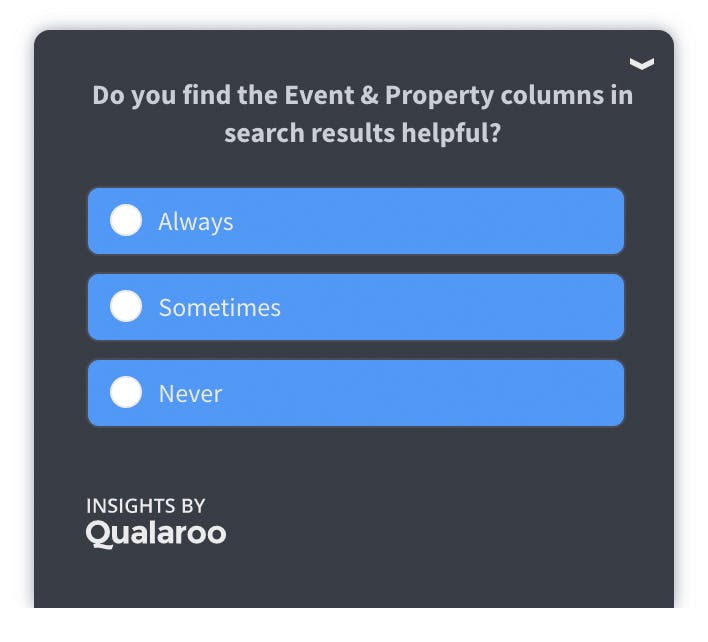
For one-question surveys, you can use a tool like Qualaroo to gauge the response of customers who are already active on your website.
For longer-form surveys, there are a ton of options. SurveyKing offers a free platform for small businesses that's just starting to explore the power of feedback. Alchemer adapts to everyone from solopreneurs up to larger organizations, and at the enterprise level, Qualtrics yields dynamic, sophisticated insights.
If you want customers to follow through on completing a survey, make sure you follow some simple best practices.
-
Only ask questions that help you meet your goals.
-
Write thoughtful open-ended questions.
-
Create consistent rating scales.
-
Avoid leading or loaded questions.
2. Email and customer contact forms
Email is one of the easiest ways to gather candid customer feedback. Because it's a support channel for most companies, you can use each interaction as an opportunity to gather feedback. To maximize the likelihood of hearing back from a customer, do these three things:
Set clear expectations
Sometimes, customers don't offer important feedback because they don't think anyone cares. Is it any wonder most companies don't hear from unhappy customers? Many of those same customers may be willing to leave feedback if they knew they'd hear back — and exactly when to expect a response.
Consider adding a short sentence to your emails that tells people how soon they can anticipate hearing back from you. "We'll get back to within X hours/days" will go a long way to set expectations and build trust with your community.
Organize email feedback
At Help Scout, we use Trello to create "boards" your whole team can access and contribute to with great customer feedback. It's a clear process ensuring that no helpful insights slip through the cracks. Here's the system:
-
Create boards within Trello titled "Product Ideas" (feature requests), "Up Next" (what's being worked on) and "Roadmap" (what you plan to work on).
-
Build individual cards within each board to categorize requests. For our Product Ideas board, we use sections like "Inbox" (new ideas), "Rejected" (discarded ideas), "Someday/Maybe" (good ideas, but not urgent), and "Apps" (integration requests).
-
Add email addresses within cards for the people who requested the idea. For instance, anyone who asked us for Reports upgrades will be added to a list within a card so that they can be notified when the upgrade is complete. Here's an example card (with emails blocked out for privacy):
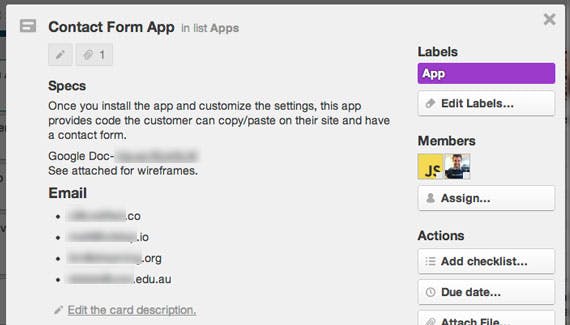
This system enables you to keep tabs on requests and their requestors, as well as ideas you've already passed on. The process also gives employees a clear roadmap to guide future customer interactions.
Send personalized responses
The best way to get a candid response from a customer is to simply ask for one. Since email enables you to send a one-to-one request, you can ask for more personal feedback than in a survey.
When customers sign up for more information about your services, for example, you can send out an auto-responder email asking a single question. Inquire into the issues that customers are struggling with most, what features they would love to see, or just ask why they signed up!
The trick is to make sure you team has a set process for replying to these emails; otherwise, your customers will feel let down.
You can also use a help desk to transform every email into an opportunity to tune into customer feedback with happiness ratings. When your customers rate a reply from Help Scout, they can also add extra comments:
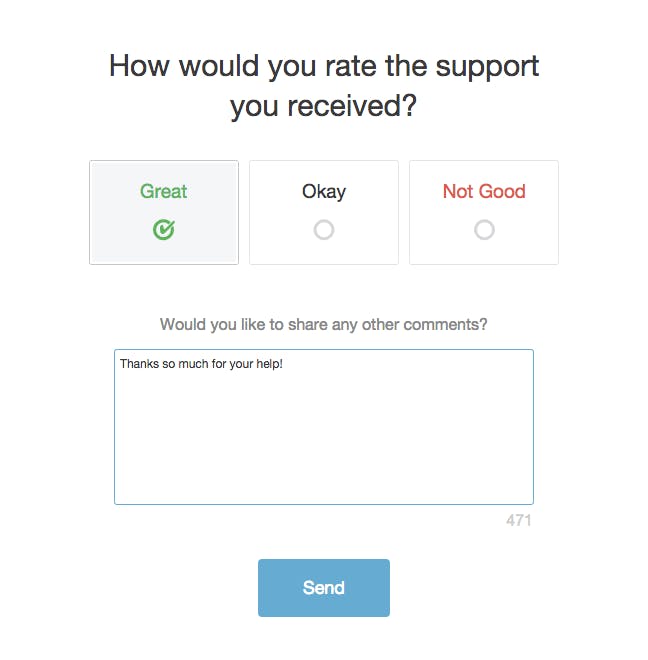
You can sort the rating and comments into happiness reports that capture the performance of individuals and teams.
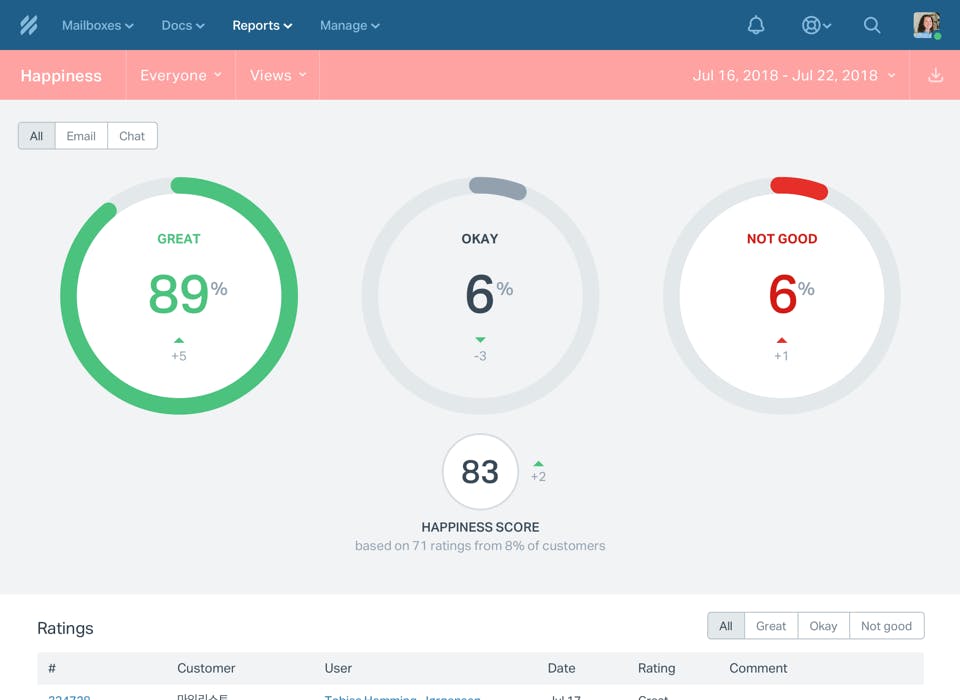
3. Usability tests
For usability testing to bring deep insights to your company, it requires more upfront planning. With a clear strategy, though, you can uncover challenges that customers don't know they're facing and actionable insights that make their experiences better.
You may even want to consider rewarding your user research participants the way Google does.
At Help Scout, we leverage usability testing to refine design details or new features. When we're 90% finished with the updates, these tests guarantee we get that last 10% right.
When our team prepared to launch major improvements to our Beacon product, they opened Beacon 2.0 to a small number of beta participants based on their current implementation of Beacon 1.0. We transformed their feedback into product adjustments that improved the product before we rolled it out to everyone.
Even though most of us associate user testing with web-based products, the fundamentals apply to any business.
Let's say you run a gym. Offer a customer a free month to visit your gym three to five days a week and keep a diary about their experiences. Learning about the business from their perspective uncovers small tweaks that make a huge difference to the customer experience.
The book Rocket Surgery Made Easy by Steve Krug can help you start to understand the power of usability testing. For web-based testing with people who don't know your business, check out UserTesting — they do an outstanding job, too.
4. Exploratory customer interviews
Does direct outreach translate to beneficial feedback from customers? Absolutely! Reaching out to customers directly opens up conversations that otherwise wouldn't happen.
Qualitative stories from customers bring color and nuance to quantitative feedback (data). These personal experiences help a team understand the feelings behind customer decisions and the community response to a company's brand or decisions.
When you conduct customer interviews, you create the opportunity to challenge false assumptions that developed over time.
Keep the following tips in mind when you sit down to talk to customers:
-
Start an open-ended dialogue. When you're talking to customers, open-ended questions are your best friend. These queries give your customers the flexibility to dig into their experiences with more detail. Plus, they're less likely to be biased or leading questions.
-
Get more specific as you go. Begin the conversation with wider impressions and get more detailed in your questions as the dialogue evolves. Every piece of feedback they give you is an opportunity for another more specific follow-up.
-
Practice active listening. To receive insights that can help your team, you need to be open and receptive. Maintain eye contact and mirror back the key takeaways you're hearing from clients, always keeping the spotlight on them.
Don't let distance stop you either. Help Scout uses Zoom to speak to a diverse group of customers no matter where they are.
5. Social media
Social listening can give you access to an otherwise untapped reservoir of candid feedback from customers. Direct comments or mentions on social networks aren't the only way for your business to collect customer feedback either — many networks include built-in polling tools. Look at this quick poll on Instagram:
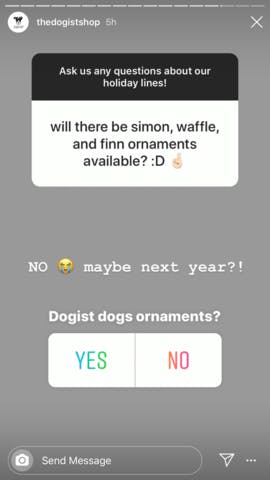
The Dogist Shop created an "Ask us any questions about our holiday lines" survey on Instagram stories. A customer asked The Dogist Shop on Instagram if they planned on making ornaments of the team's dogs this year.
Not only could the team clarify the answer to the entire community, but Dogist also asked the community if they wanted ornaments next year in a one-question Instagram poll. This kind of natural engagement ensures that their team's product decisions align with the purchasing behaviors of their community.
6. On-site activity (via analytics)
Analytics reveal what customers don't know about how they use your product. Especially if you sell a digital product or service, you benefit from leveraging analytics to understand how users interact with your company.
For example, if you offer self-service content as a form of customer service, you could see the number of people visiting each article.
If one article has an 0:09 average time on page and an awful bounce rate, you know something isn't sticking about your messaging. Reporting tools like like Help Scout's Docs Report give you insights about failed searches, most frequently visited pages, and so on so you can improve your customer's self-service experience.
7. Instant feedback from your website
With an embeddable on-site widget like Beacon, you can collect instant customer feedback without asking the customer any questions.
At Help Scout, for example, we pulled nine articles into a webpage that could be valuable to potential customers on the page. Instead of asking customers which articles they preferred, Beacon collected the data on the most popular articles. If none of the articles helped, the customer could email the team — and that's valuable information, too.
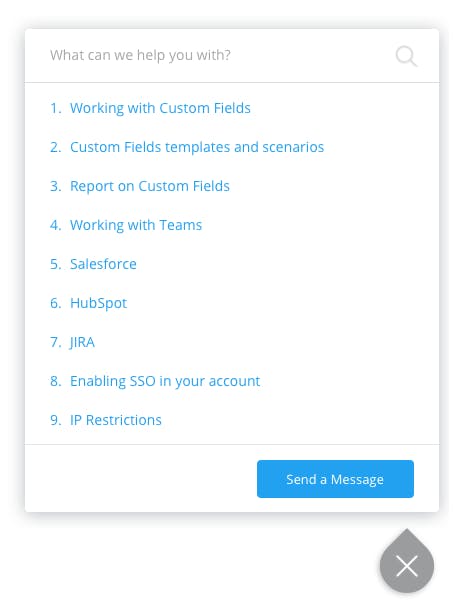
Collecting customer feedback is crucial
Customers can transform every aspect of your company for the better if you listen to their feedback. Think about your most pressing goals and start with one clear, simple method for collecting customer feedback before expanding out to more complex tactics like usability testing and analytics.
Customer support channels are the ideal place to begin — your support team brings more value when they approach every interaction as an opportunity to collect quantitative and qualitative feedback on real experiences with your company.
Source: https://www.helpscout.com/blog/customer-feedback/
0 Response to "How to Write a Quesition to Encurge Feed Back From Your Readers"
Post a Comment